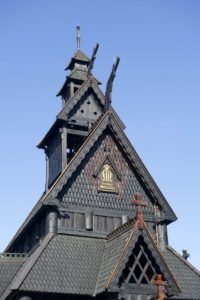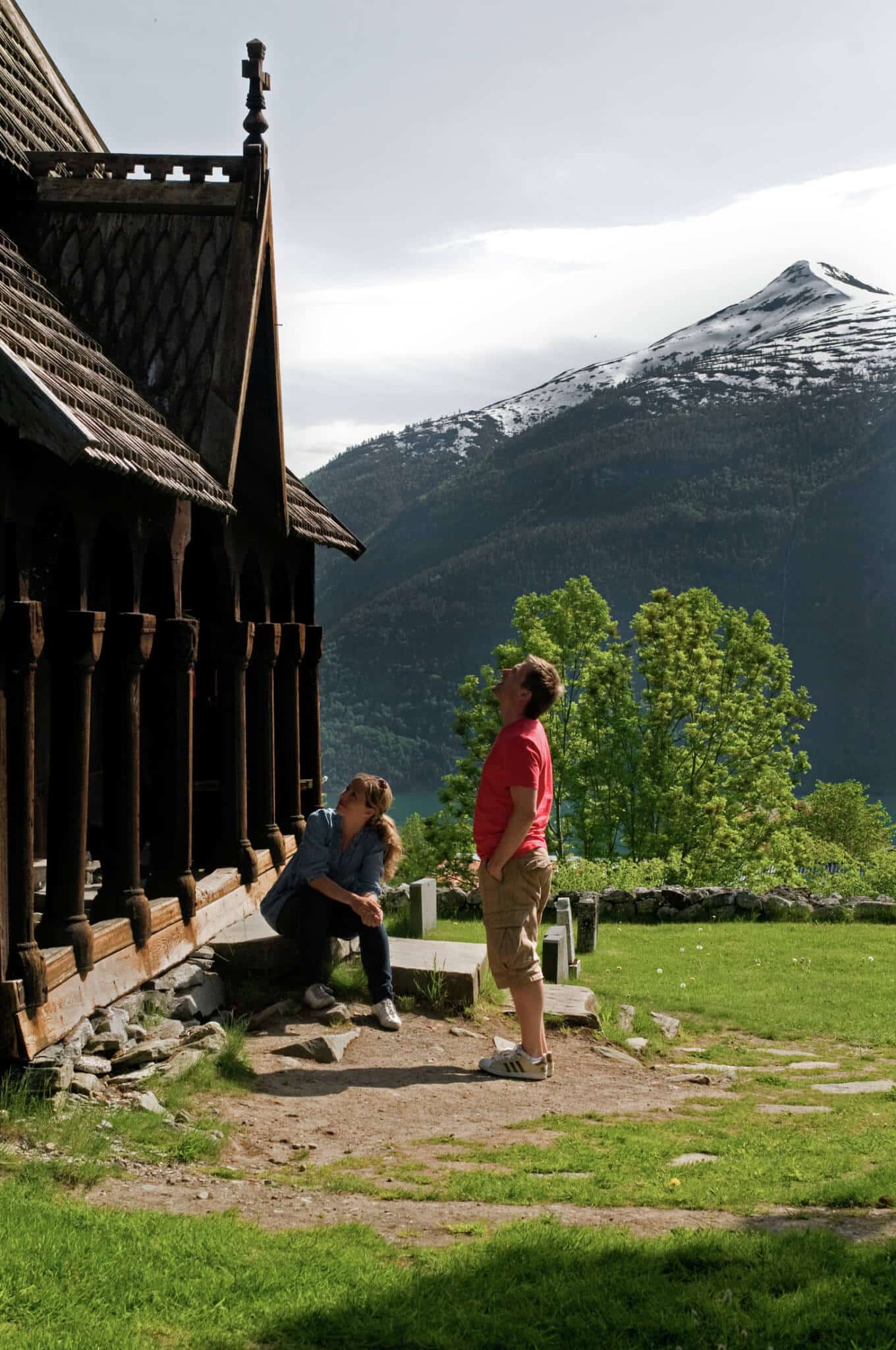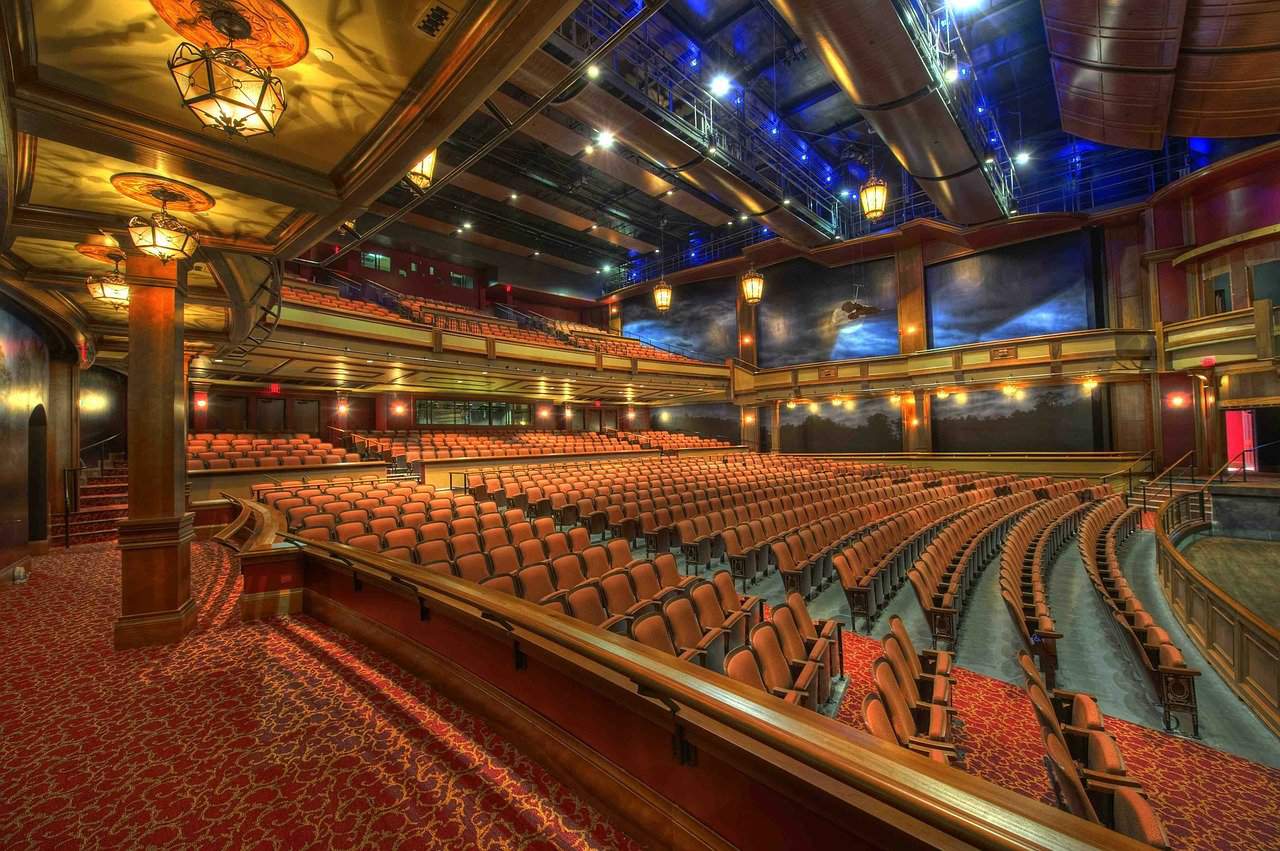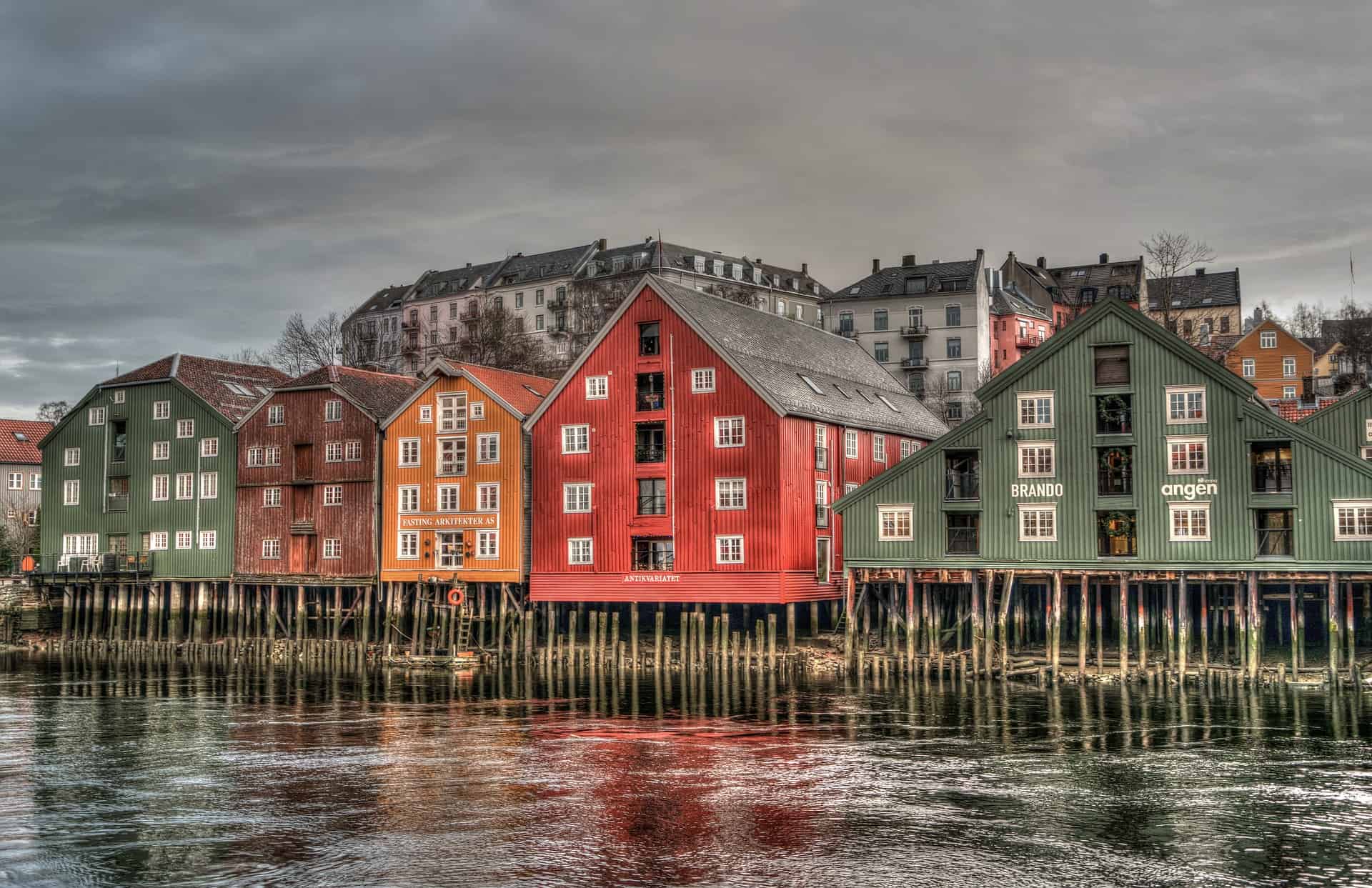List Over Stave Churches in Norway
In Lustrafjorden, on a beautifully pointed and narrow piece of land that juts out into the sea surrounded by farms and fruit trees, is the stave church which was incorporated into the World Heritage Site in 1979. Urnes stave church is the oldest and most ornate of Norway’s 28 stave churches. The church is built in the latter half of the 1100s, but it is proven remains of earlier churches back to the 900s. Here we have a complete list over stave churches in Norway, with a brief description. Click on the name of the church for further reading. We are continually updating our list, but those with a more in-depth article is highlighted.
Borgund Stave Church
Borgund Stave Church in Sogn county is the best preserved of the Norwegian stave churches, remarkable by its fine erection and prudent proportions. Built about 1200, dedicated to St Andrew and later it neither added nor rebuilt on. Outside you will notice dragon heads on gables, the carved west portal, ambulatory and the bell. Inside one sees that twelve cross-braced pillars support the central nave. The pulpit dates from the late 1500s and the altarpiece from 1620.
Borgund Stave Church is the best preserved of Norwegian stave churches
Heddal Stave Church
Heddal Stave Church is Norway’s largest. It is triple-nave with an apse and surrounded by a covered ambulatory. Presumably, the erection of the church was around 1250. The murals and the altarpiece is from the 1600s. Church underwent a restoration in the 1850s and repaired 100 years later.
Urnes Stave Church
The Urnes Stave Church in Sogn, is Norway’s oldest, erected around 1150. It have substantial parts from an older church such as the richly carved north portal. This woodcarving gives its name to Urnes style and dates these elements to around 1050. The interior pillar chapters are also richly ornamented. Over the chancel arch hangs a Roman crucifix. Other pieces of Inventory dates from the 1660s.
Roldal Stave Church (Røldal)
Roldal Stave Church (Røldal) is probably from the 13th century. Nave and Chancel decorated in the 1600’s. Healing powers attributed to the medieval crucifix above the altarpiece. Annual pilgrimage continued far into Protestant times
Eidsborg Stave Church
Eidsborg Stave Church is probably the first built in the early 1200s and is devoted to the traveler’s patron saint, Nicholas of Bari. The painted figures and ornaments from the 1600s was uncovered by restoration in 1929
Heddal Stave Church
The medieval nave forms the core of Rollag church, but the stave church was enlarged and rebuilt towards the end of the 17th century. The pulpit and wall decorations also dates from these times.
The valley of Numedal is famous for its wooden churches. The Nore Church was built in the 1100s as a cruciform church, and extended and partially rebuilt during the 17th and 18th centuries. Flesberg stave church is from the same period and rebuilt to a cruciform church in 1735.
High up in Numedal we find Uvdal Stave Church, also from the late 12th century and rebuilt to a cruciform church in 1723. The portals, the grotesque half masks over the chancel-arch and the west gallery carvings are medieval. Renaissance decor is from the 1600s and rococo ornaments from the 1700s.
Torpo stave church
Torpo stave church was dedicated to St. Margareta in the second half of the 12th century. It is Hallingdal’s oldest building. A carved porch and painted ceiling motifs from the St. Margaret legend are medieval decorations.
Hedal church
Hedal church is originally a stave church from the end of 12th century. It expanded into a cruciform church in 1699, and underwent several later additions. In the sacristy, one can see the skin of a bear, which was, according to legend, shot in front of the altar when the church was rediscovered after the Black Death.
From the Reinli Stave Church, there is a wide view far beyond the Valdres district. The church is first mentioned in 1327, but probably dates back to the 1200s. The altarpiece is a reworked triptych from the middle Ages. The pulpit has a Renaissance feel.
Urnes Stave church
Hegge stave church, the parish church in Øystre Slidre in Valdres. First mentioned in 1327, but is presumably one hundred years older. It is of basilica type with eight bearing columns. A local artist carved the altarpiece in 1780.
Up on the hillside in Vestre Slidre is Lomen stave church from about 1200. The ship’s central compartment, is supported by four columns and have rich woodcarving portals, chancel arch and column headers (capitals). In size and shape, it corresponds to the Høre church in the neighboring parish.

Haltdalen Stave Church, the country’s northernmost stands at Trøndelag Folk Museum. The church is probably from the 1100s, and is the only stave church back of the East Scandinavian type. This simple nave type was widespread in Trøndelag and Sweden.
Hore stave church (Høre) is from the second half of the 1100s and rebuilt around 1820. The cemetery gate, which is the original church’s ridge turret, has fine carvings. Inside, you will notice the capitals, the pulpit and the naive altarpiece.
Oye Stave Church (Øye) is from 1100- 1200’s; It was reconstructed in 1956 from 156 parts that were found under the floor under the present parish church.
Fantoft stave church, from the 12th century, built in Fortun, moved in 1879 to Fantoft. In the oldest door in the church there is mounted a small wrought iron with green stone, probably a relic, now known as desire stone. Outside the church, a stone cross from the introduction of Christianity about the year 1000.
Hopperstad stave church, situated in Vik in Sogn district, is a stave church of the triple-nave type, probably from the late 1100s. The most interesting features is the Gothic alter-baldaquin with carved heads and decorations, and paintings in the vault depicting the childhood of Jesus.

Kaupanger stave church from about 1180. Restored and given the exterior it previously had, around 1600. The renaissance interior also stems from this time.
The old Garmo stave church is from Lom. It has been re-erected at Maihaugen in Lillehammer. The church is an old type and probably built in the 1100s. The pulpit was made in Romsdal on the West Coast. The remaining interior consists of 17th and 18th century Gudbrandsdal pieces, restored and partly reconstructed.
Vaga stave church (Vågå), first mentioned in 1130. Rebuilt from 1625 to 1630 with the use of materials from demolished stave churches. The font and the large crucifix are medieval, the pulpit and altarpiece from the 1600s. The chancel arch carved and decorated in 1758.
Favang stave church (Fåvang) was rebuilt in cruciform around 1630 using stave materials. The altarpiece and the pulpit is in Renaissance style. The chance-arch carved and painted by a village artist in the 1700s.
One of the Stave churches in Norway – Lom Church
Stave Church from Gol in Hallingdal. Constructed about 1200 with staves (pillars) as the key element to support the roof. Was in 1885 moved to King Oscar 2nd place Badusbråten- now part of the Norwegian Folk Museum. Used today for worship during the summer, Church services held every Sunday during these months.
Ringbu stave church is from the late 1100s and converted to a cruciform church around 1630. St Laurentius figure and baptismal font is medieval, the altarpiece from 1686, the pulpit and the chancel screen-monogram from 1702.
Lom stave church – triple naves and many columned – dates from the end of 1100’s. Extended to a cruciform church in the 17th century. The chancel decorated in 1608. The chancel-arch carved in 1793. The acanthus leaves in the pulpit is of recent date. Restoration was in 1933.
Rodven church (Rødven) in Romsdal, is a single-nave stave church. It contains parts from the late 12thcentury. The church have underwent considerable restructures and changes through time. A 13th century crucifix belongs to the old interior.




